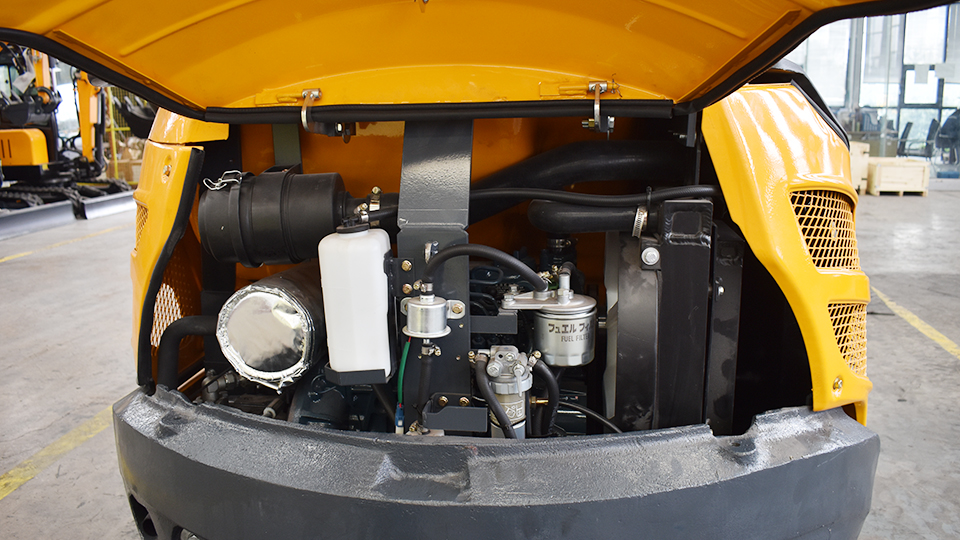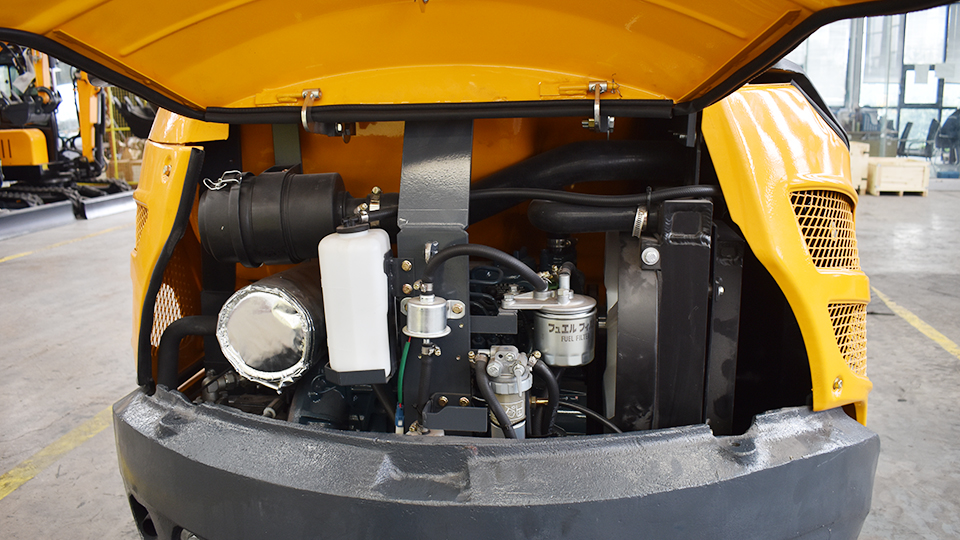Digging Deep: A Comprehensive Guide to Sourcing Excavator Spare Parts
Excavators are the workhorses of countless industries, from construction and demolition to mining and landscaping. Their robust design and powerful capabilities allow them to tackle demanding tasks, but like any complex machinery, they require regular maintenance and occasional repairs. When downtime strikes, the ability to quickly and reliably source high-quality spare parts is crucial to minimizing disruption and keeping projects on schedule. This technical article provides an in-depth guide to the various avenues for purchasing excavator spare parts, exploring the pros and cons of each option to help you make informed decisions.
Understanding the Landscape of Excavator Spare Parts Suppliers
The market for excavator spare parts is diverse, offering a range of suppliers catering to different needs and budgets. These can broadly be categorized as:
Original Equipment Manufacturers (OEMs): These are the companies that manufactured your excavator (e.g., Caterpillar, Komatsu, John Deere, Volvo). They offer genuine parts specifically designed and tested for their machines.
Independent Aftermarket Suppliers: These companies specialize in manufacturing and distributing spare parts that are compatible with various excavator brands and models. They often offer a wider range of price points and may provide parts with comparable or even enhanced performance.
Used Parts Dealers and Salvage Yards: These businesses dismantle used or end-of-life excavators and sell the salvaged components. This can be a cost-effective option for certain parts, but quality and reliability can be variable.
Online Marketplaces and Retailers: The rise of e-commerce has led to numerous online platforms selling excavator parts, offering convenience and a broad selection.
Local Equipment Dealers and Repair Shops: These businesses often stock common replacement parts and can provide expert advice and installation services.
Delving into the Different Purchase Channels
Let's examine each of these options in detail, considering their advantages and disadvantages:
1. Original Equipment Manufacturers (OEMs)
Where to Buy: Directly through authorized dealerships of the specific excavator brand. Most OEMs have extensive dealer networks with dedicated parts departments.
Pros:
Guaranteed Compatibility: OEM parts are designed and manufactured specifically for your machine, ensuring a perfect fit and optimal performance.
High Quality and Reliability: OEMs typically adhere to stringent quality control standards, offering parts with proven durability and reliability.
Warranty Coverage: OEM parts often come with a warranty, providing peace of mind.

Technical Support and Expertise: Dealer parts departments have knowledgeable staff who can help you identify the correct parts and offer technical advice.
Cons:
Higher Cost: OEM parts are generally the most expensive option.
Potentially Longer Lead Times: Depending on the part and its availability, lead times for OEM parts can sometimes be longer, especially for older or less common models.
2. Independent Aftermarket Suppliers
Where to Buy: Through dedicated aftermarket parts distributors, online retailers specializing in heavy equipment parts, and some local equipment dealers.
Pros:
Lower Cost: Aftermarket parts are typically more affordable than OEM parts.
Wide Availability: A vast network of aftermarket suppliers often means parts are readily available.
Variety of Brands and Quality Levels: The aftermarket offers a spectrum of brands and quality levels, allowing you to choose parts that fit your budget and performance requirements. Some aftermarket manufacturers may even offer upgraded or enhanced versions of OEM parts.
Cons:
Variable Quality: Quality can vary significantly between different aftermarket brands. It's crucial to research suppliers and choose reputable ones.
Potential Compatibility Issues: While most reputable aftermarket suppliers ensure compatibility, there's always a slight risk of fitment issues if the part isn't manufactured to precise specifications.
Limited Warranty: Aftermarket parts may have shorter or less comprehensive warranties compared to OEM parts.
Less Technical Support: Aftermarket suppliers may not offer the same level of technical support and expertise as OEM dealers.
3. Used Parts Dealers and Salvage Yards
Where to Buy: Specialized used heavy equipment parts dealers and salvage yards that dismantle excavators. Online marketplaces may also list used parts.
Pros:
Significant Cost Savings: Used parts can be considerably cheaper than new OEM or aftermarket parts.
Availability of Obsolete Parts: Salvage yards may be the only source for parts for very old or discontinued excavator models.
Cons:
Uncertain Quality and Remaining Lifespan: The condition and remaining lifespan of used parts can be difficult to assess.
No Warranty: Used parts typically come with no warranty or a very limited guarantee.
Time-Consuming Search: Finding the specific used part you need can be a time-consuming process.
Potential for Damage: Used parts may have existing wear, tear, or hidden damage.
4. Online Marketplaces and Retailers
Where to Buy: Large online marketplaces (e.g., eBay, Amazon) and specialized e-commerce websites dedicated to heavy equipment parts.
Pros:
Convenience and Accessibility: Online platforms offer a wide selection of parts from various suppliers, accessible from anywhere with an internet connection.
Competitive Pricing: The online marketplace often fosters price competition.

Extensive Product Information: Many online listings provide detailed product descriptions and specifications.
Customer Reviews and Ratings: Online platforms often feature customer reviews that can provide insights into the quality and reliability of suppliers and parts.
Cons:
Difficulty in Assessing Quality: It can be challenging to assess the quality of parts based solely on online descriptions and images.
Potential for Counterfeit Parts: The risk of purchasing counterfeit or low-quality parts is higher on some online marketplaces.
Shipping Costs and Lead Times: Shipping costs can add to the overall expense, and lead times may vary depending on the supplier's location.
Limited Technical Support: Direct technical support may be limited compared to dealers or specialized suppliers.
5. Local Equipment Dealers and Repair Shops
Where to Buy: Authorized dealers of various excavator brands and independent heavy equipment repair shops in your local area.
Pros:
Convenience for Common Parts: Local dealers and repair shops often stock frequently needed replacement parts.
Expert Advice and Service: Their staff can provide knowledgeable advice, help you identify the correct parts, and offer installation services.
Faster Turnaround for Repairs: If you need a part urgently, a local supplier can often provide it more quickly than an online vendor or OEM dealer located far away.
Building Relationships: Establishing a relationship with a local dealer or repair shop can be beneficial for ongoing maintenance and support.
Cons:
Potentially Higher Prices: Prices at local dealers and repair shops may be higher than online or aftermarket suppliers due to overhead costs.
Limited Inventory: Their inventory may be limited to the most common parts.
Key Factors to Consider When Buying Excavator Spare Parts
Regardless of where you choose to purchase excavator spare parts, several critical factors should influence your decision:
Urgency: How quickly do you need the part? For critical breakdowns, local suppliers or those offering expedited shipping may be necessary.
Budget: What is your budget for the repair? This will help you narrow down your options between OEM, aftermarket, and used parts.
Part Complexity and Criticality: For complex or critical components (e.g., engine parts, hydraulic pumps), opting for OEM or reputable aftermarket brands is generally advisable to ensure reliability and performance. For less critical parts (e.g., filters, wear items), cost-effective aftermarket options may be suitable.
Warranty: Consider the warranty offered by the supplier. A longer warranty period can provide greater peace of mind.
Supplier Reputation and Reliability: Research the reputation and reliability of the supplier. Check online reviews and ask for recommendations from other equipment owners or mechanics.
Part Number and Compatibility: Always try to identify the exact part number required for your specific excavator model. Double-check compatibility before making a purchase.
Shipping Costs and Lead Times: Factor in shipping costs and the estimated delivery time, especially if downtime is costly.
Return Policy: Understand the supplier's return policy in case the part is incorrect or defective.
Navigating the Purchase Process
To ensure a smooth and successful purchase of excavator spare parts, follow these steps:
Identify the Exact Part Needed: Consult your excavator's service manual or parts catalog to determine the correct part number. If you're unsure, consult with a qualified mechanic.
Research Suppliers: Explore the different types of suppliers mentioned above and identify potential vendors based on your needs and the factors discussed.
Compare Prices and Quality: Obtain quotes from multiple suppliers and compare prices, quality, warranty, and shipping costs.
Verify Compatibility: Double-check that the part you are considering is compatible with your specific excavator make and model.
Check Supplier Reputation: Read online reviews and seek recommendations to assess the supplier's reliability and customer service.
Understand the Terms and Conditions: Carefully review the supplier's payment terms, shipping policies, return policy, and warranty information.
Keep Records: Maintain records of all parts purchased, including supplier information, part numbers, purchase dates, and warranty details.
Conclusion: Making Informed Choices for Excavator Maintenance
Sourcing spare parts for your excavator is a critical aspect of equipment ownership and maintenance. By understanding the diverse landscape of suppliers, weighing the pros and cons of each option, and considering key factors such as urgency, budget, and part criticality, you can make informed decisions that minimize downtime, control costs, and ensure the continued reliable operation of your machinery. Whether you opt for the guaranteed compatibility of OEM parts, the cost-effectiveness of aftermarket options, or the potential savings of used components, a thorough and strategic approach to parts procurement is essential for keeping your excavators digging strong.
Post time:Sep-25-2020
